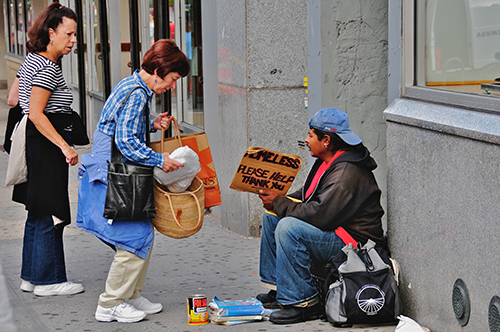Oct 28 2015 Lessons in building a common fact base from Project Homeless Connect in San Francisco
 From The Intersector Project Case Library: Providing Care to the Homeless Population in San Francisco
From The Intersector Project Case Library: Providing Care to the Homeless Population in San Francisco
San Francisco’s homeless population is among the highest per capita in the country. In 2003, when Gavin Newsom was elected Mayor, he recognized that existing initiatives and funding streams were failing to address the growing humanitarian and economic crisis. Mayor Newsom tapped Alex Tourk, then Deputy Chief of Staff, to collaboratively create a new strategy for helping the city’s homeless population. Alex began with the Department of Public Health’s Homeless Outreach Team (HOT), organizing their efforts into a larger, city-wide coordination service. His efforts resulted in Project Homeless Connect (PHC), an organization that united City agencies, the business community, several non-profit organizations, and a wide network of volunteers to create one-day events that provide homeless individuals with access to a variety of social and health services. By August of 2013, PHC had registered as an independent charitable organization and is now jointly funded by public and private sources, offering the homeless community ongoing, sustainable access to services.
In developing PHC, Alex made use of a tactic The Intersector Project Toolkit refers to as Build a Common Fact Base — consensus among collaboration partners as to what facts relating to the issue are most relevant. Alex began by using the Department of Public Health’s Homeless Outreach Team (HOT) as his primary point of contact. HOT had developed the Acuity Index Form (AIF), a quick screening that could be used on the street by nonmedical staff in fewer than 10 minutes to assess the needs of homeless individuals and determine next steps to help them. Alex used this data to determine what goods and services PHC events needed to have the most significant impact. While collaboration partners and community members may have biases, sector-specific or otherwise, that influence their determination of what facts are relevant to the issue at hand, of what “the problem” really is, the HOT data enabled consensus on the needs of homeless individuals and a strategic direction for PHC.
By August of 2013, Project Homeless Connect had held 52 volunteer events, with more than 45,000 volunteers providing services to almost 70,000 homeless and low-income San Franciscans. PHC is a truly collaborative effort, with business and government playing an important role in the non-profit organization reaching as many individuals as possible. Three sectors have come together in a comprehensive model, the focus of which is to give each client access to every service that could potentially improve his or her situation. The organization’s ability to engage and maintain an active and involved volunteer network, along with partnerships with the private sector, corporations, and foundations, ensures that PHC is representative of the entire San Francisco community and thus can best serve most needy members of that community. Continuing results include:
- National model of PHC events adopted by the United States Interagency Council on Homelessness (USICH), utilizing the program in over 200 cities and abroad.
- Everyday Connect, a location in San Francisco with regular weekday office hours, connecting clients to comprehensive social and medical services (including medical and mental health, addiction treatment and recovery services, food, clothing, computer access and classes, transportation, employment services, medical, SSI, SSDI, income assistance, and other financial services).
